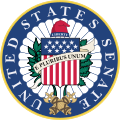| Portrait | Name | State | Party | Term | Congress |
|---|
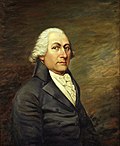 | John Langdon [c] | New Hampshire | | Pro-Administration | April 6–21, 1789 | 1st Congress |
| August 7–9, 1789 |
 | Richard Henry Lee | Virginia | | Anti-Administration | April 18 – October 8, 1792 | 2nd Congress |
 | John Langdon | New Hampshire | | Pro-Administration | November 5 – December 4, 1792 |
| March 1–3, 1793 |
| March 4 – December 2, 1793 | 3rd Congress |
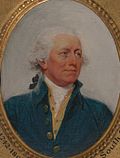 | Ralph Izard | South Carolina | | Pro-Administration | May 31 – November 9, 1794 |
 | Henry Tazewell | Virginia | | Anti-Administration | February 20, 1795 – June 7, 1795 |
| Democratic-Republican | 4th Congress |
| December 7–8, 1795 |
 | Samuel Livermore | New Hampshire | | Federalist | May 6 – December 4, 1796 |
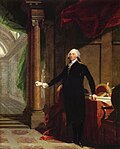 | William Bingham | Pennsylvania | | Federalist | February 16 – March 3, 1797 |
 | William Bradford | Rhode Island | | Federalist | July 6 – October 1797 | 5th Congress |
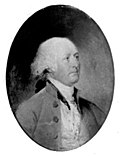 | Jacob Read | South Carolina | | Federalist | November 22 – December 12, 1797 |
 | Theodore Sedgwick | Massachusetts | | Federalist | June 27 – December 5, 1798 |
 | John Laurance | New York | | Federalist | December 6–27, 1798 |
 | James Ross | Pennsylvania | | Federalist | March 1 – December 1, 1799 |
 | Samuel Livermore | New Hampshire | | Federalist | December 2–29, 1799 | 6th Congress |
 | Uriah Tracy | Connecticut | | Federalist | May 14 – November 16, 1800 |
 | John E. Howard | Maryland | | Federalist | November 21–27, 1800 |
 | James Hillhouse | Connecticut | | Federalist | February 28 – March 3, 1801 |
 | Abraham Baldwin | Georgia | | Democratic-Republican | December 7, 1801 – January 14, 1802 | 7th Congress |
| April 17 – December 13, 1802 |
 | Stephen R. Bradley | Vermont | | Democratic-Republican | December 14, 1802 – January 18, 1803 |
| February 25, 1803 |
| March 2 – October 16, 1803 |
 | John Brown | Kentucky | | Democratic-Republican | October 17 – December 6, 1803 | 8th Congress |
| January 23 – February 26, 1804 |
 | Jesse Franklin | North Carolina | | Democratic-Republican | March 10 – November 4, 1804 |
 | Joseph Anderson | Tennessee | | Democratic-Republican | January 15 – February 3, 1805 |
| February 28 – March 2, 1805 |
| March 2 – December 1, 1805 |
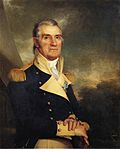 | Samuel Smith | Maryland | | Democratic-Republican | December 2–15, 1805 | 9th Congress |
| March 18 – November 30, 1806 |
| March 2 – October 25, 1807 |
| April 16 – November 6, 1808 | 10th Congress |
 | Stephen R. Bradley | Vermont | | Democratic-Republican | December 28, 1808 – January 8, 1809 |
 | John Milledge | Georgia | | Democratic-Republican | January 30 – March 3, 1809 |
| March 4 – May 21, 1809 | 11th Congress |
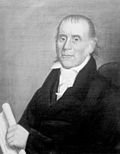 | Andrew Gregg | Pennsylvania | | Democratic-Republican | June 26 – December 18, 1809 |
 | John Gaillard | South Carolina | | Democratic-Republican | February 28 – March 2, 1810 |
| April 17 – December 11, 1810 |
 | John Pope | Kentucky | | Democratic-Republican | February 23 – November 3, 1811 |
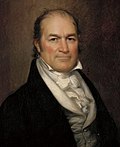 | William H. Crawford [d] | Georgia | | Democratic-Republican | March 24, 1812 – March 3, 1813 | 12th Congress |
| March 4–23, 1813 | 13th Congress |
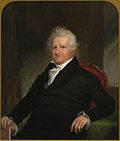 | Joseph B. Varnum | Massachusetts | | Democratic-Republican | December 6, 1813 – February 3, 1814 |
 | John Gaillard [e] | South Carolina | | Democratic-Republican | April 18 – November 25, 1814 |
| November 25, 1814 – December 3, 1815 |
| December 4, 1815 – March 3, 1817 | 14th Congress |
| March 4, 1817 | 15th Congress |
| March 6, 1817 – February 18, 1818 |
| March 31, 1818 – January 5, 1819 |
 | James Barbour | Virginia | | Democratic-Republican | February 15 – December 5, 1819 |
| December 6–26, 1819 | 16th Congress |
 | John Gaillard | South Carolina | | Democratic-Republican | January 25, 1820 – December 2, 1821 |
| December 3–27, 1821 | 17th Congress |
| February 1 – December 2, 1822 |
| February 19 – November 30, 1823 |
| December 1, 1823 – January 20, 1824 | 18th Congress |
| May 21, 1824 – March 3, 1825 |
| March 9 – December 4, 1825 | 19th Congress |
 | Nathaniel Macon | North Carolina | | Democratic-Republican | May 20 – December 3, 1826 |
| January 2 – February 13, 1827 |
| March 2 – December 2, 1827 |
 | Samuel Smith | Maryland | | Jacksonian | May 15 – December 18, 1828 | 20th Congress |
| March 13 – December 10, 1829 | 21st Congress |
| May 20 – December 31, 1830 |
| March 1 – December 4, 1831 |
| December 5–11, 1831 | 22nd Congress |
 | Littleton Tazewell | Virginia | | Jacksonian | July 9–16, 1832 |
 | Hugh Lawson White [f] | Tennessee | | Jacksonian | December 3, 1832 – December 1, 1833 |
| December 2–15, 1833 | 23rd Congress |
 | George Poindexter | Mississippi | | National Republican | June 28 – November 30, 1834 |
 | John Tyler | Virginia | | National Republican | March 3 – December 6, 1835 | 24th Congress |
 | William R. King | Alabama | | Democratic | July 1 – December 4, 1836 |
| January 28 – March 3, 1837 |
| March 7 – September 3, 1837 | 25th Congress |
| October 13 – December 3, 1837 |
| July 2 – December 18, 1838 |
| February 25 – December 1, 1839 |
| December 2–26, 1839 | 26th Congress |
| July – December 15, 1840 |
| March 3, 1841 |
| March 4, 1841 | 27th Congress |
 | Samuel Southard [g] | New Jersey | | Whig | March 11, 1841 – May 31, 1842 |
 | Willie P. Mangum [g] | North Carolina | | Whig | May 31, 1842 – December 3, 1843 |
| December 4, 1843 – March 3, 1845 | 28th Congress |
| March 4, 1845 | 29th Congress |
 | Ambrose H. Sevier [h] | Arkansas | | Democratic | December 27, 1845 |
 | David R. Atchison | Missouri | | Democratic | August 8 – December 6, 1846 |
| January 11–13, 1847 |
| March 3 – December 5, 1847 |
| February 2–8, 1848 | 30th Congress |
| June 1–14, 1848 |
| June 26 – July 29, 1848 |
| July 29 – December 4, 1848 |
| December 26, 1848 – January 1, 1849 |
| March 2–4, 1849 |
| March 5, 1849 | 31st Congress |
| March 16 – December 2, 1849 |
 | William R. King [i] | Alabama | | Democratic | May 6–19, 1850 |
| July 11, 1850 – March 3, 1851 |
| March 4, 1851 – December 20, 1852 | 32nd Congress |
 | David R. Atchison [i] [j] | Missouri | | Democratic | December 20, 1852 – March 3, 1853 |
| March 4, 1853 – December 4, 1854 | 33rd Congress |
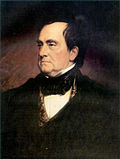 | Lewis Cass [j] | Michigan | | Democratic | December 4, 1854 |
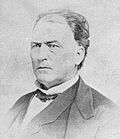 | Jesse D. Bright [j] | Indiana | | Democratic | December 5, 1854 – December 2, 1855 |
| December 5, 1855 –June 9, 1856 | 34th Congress |
 | Charles E. Stuart [j] | Michigan | | Democratic | June 9–10, 1856 |
 | Jesse D. Bright [j] | Indiana | | Democratic | June 11, 1856 – January 6, 1857 |
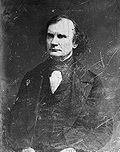 | James M. Mason [j] | Virginia | | Democratic | January 6 – March 3, 1857 |
| March 4, 1857 | 35th Congress |
 | Thomas J. Rusk | Texas | | Democratic | March 14 – July 29, 1857 |
 | Benjamin Fitzpatrick | Alabama | | Democratic | December 7–20, 1857 |
| March 29 – May 2, 1858 |
| June 14 – December 5, 1858 |
| January 19, 1859 |
| January 25 – February 9, 1859 |
| March 9 – December 4, 1859 | 36th Congress |
| December 19, 1859 – January 15, 1860 |
| February 20–26, 1860 |
 | Jesse D. Bright | Indiana | | Democratic | June 12–26, 1860 |
 | Benjamin Fitzpatrick | Alabama | | Democratic | June 26 – December 2, 1860 |
 | Solomon Foot | Vermont | | Republican | February 16–17, 1861 |
| March 23 – July 3, 1861 | 37th Congress |
| July 18 – December 1, 1861 |
| January 15, 1862 |
| March 31 – May 21, 1862 |
| June 19 – December 12, 1862 |
| February 18 – March 3, 1863 |
| March 4 – December 6, 1863 | 38th Congress |
| December 18–20, 1863 |
| February 23, 1864 |
| March 11–13, 1864 |
| April 11–13, 1864 |
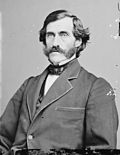 | Daniel Clark | New Hampshire | | Republican | April 26, 1864 – January 4, 1865 |
| February 9–19, 1865 |
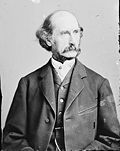 | Lafayette S. Foster [k] | Connecticut | | Republican | March 7, 1865 – March 2, 1867 | 39th Congress |
 | Benjamin F. Wade [k] | Ohio | | Republican | March 2–3, 1867 |
| March 4, 1867 – March 3, 1869 | 40th Congress |
 | Henry B. Anthony | Rhode Island | | Republican | March 23–28, 1869 | 41st Congress |
| April 9 – December 5, 1869 |
| May 28 – June 2, 1870 |
| July 1–5, 1870 |
| July 14 – December 4, 1870 |
| March 10–12, 1871 | 42nd Congress |
| April 17 – May 9, 1871 |
| May 23 – December 3, 1871 |
| December 21, 1871 – January 7, 1872 |
| February 23–25, 1872 |
| June 8 – December 1, 1872 |
| December 4–8, 1872 |
| December 13–15, 1872 |
| December 20, 1872 – January 5, 1873 |
| January 24, 1873 |
 | Matthew H. Carpenter | Wisconsin | | Republican | March 12–13, 1873 | 43rd Congress |
| March 26 – November 30, 1873 |
| December 11, 1873 – December 6, 1874 |
| December 23, 1874 – January 4, 1875 |
 | Henry B. Anthony | Rhode Island | | Republican | January 25–31, 1875 |
| February 15–17, 1875 |
 | Thomas W. Ferry [l] | Michigan | | Republican | March 9–10, 1875 | 44th Congress |
| March 19 – December 20, 1875 |
| December 20, 1875 – March 4, 1877 |
| March 5, 1877 | 45th Congress |
| February 26 – March 3, 1878 |
| April 17 – December 1, 1878 |
| March 3–17, 1879 |
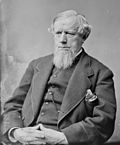 | Allen G. Thurman | Ohio | | Democratic | April 15 – November 30, 1879 | 46th Congress |
| April 7–14, 1880 |
| May 6 – December 5, 1880 |
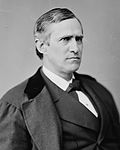 | Thomas F. Bayard, Sr. [m] | Delaware | | Democratic | October 10–13, 1881 | 47th Congress |
 | David Davis [m] | Illinois | | Independent | October 13, 1881 – March 3, 1883 |
 | George F. Edmunds [m] | Vermont | | Republican | March 3 – December 2, 1883 |
| December 3, 1883 – January 14, 1884 | 48th Congress |
| January 14, 1884 – March 3, 1885 |
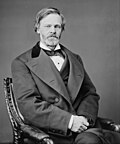 | John Sherman [n] | Ohio | | Republican | December 7, 1885 – February 26, 1887 | 49th Congress |
 | John J. Ingalls [n] | Kansas | | Republican | February 26 – December 4, 1887 |
| December 5, 1887 – March 3, 1889 | 50th Congress |
| March 7–17, 1889 | 51st Congress |
| April 2 – December 1, 1889 |
| December 5–10, 1889 |
| February 28 – March 18, 1890 |
| April 3, 1890 – March 2, 1891 |
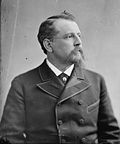 | Charles F. Manderson | Nebraska | | Republican | March 2 – December 6, 1891 |
| December 7, 1891 – March 3, 1893 | 52nd Congress |
| March 4–22, 1893 | 53rd Congress |
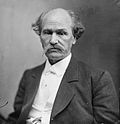 | Isham G. Harris | Tennessee | | Democratic | March 22, 1893 – January 7, 1895 |
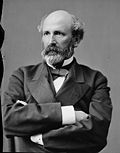 | Matt W. Ransom | North Carolina | | Democratic | January 7–10, 1895 |
 | Isham G. Harris | Tennessee | | Democratic | January 10 – March 3, 1895 |
 | William P. Frye [o] [p] | Maine | | Republican | February 7, 1896 – March 3, 1897 | 54th Congress |
| March 4, 1897 – December 3, 1899 | 55th Congress |
| December 4, 1899 – March 3, 1901 | 56th Congress |
| March 7, 1901 – March 4, 1903 | 57th Congress |
| March 5, 1903 – March 3, 1905 | 58th Congress |
| March 4, 1905 – March 3, 1907 | 59th Congress |
| December 5, 1907 – March 3, 1909 | 60th Congress |
| March 4, 1909 – March 3, 1911 | 61st Congress |
| March 4–27, 1911 | 62nd Congress |
 | Augustus O. Bacon | Georgia | | Democratic | August 14, 1911 |
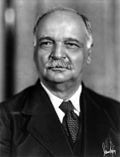 | Charles Curtis | Kansas | | Republican | December 4–12, 1911 |
 | Augustus O. Bacon | Georgia | | Democratic | January 15–17, 1912 |
 | Jacob H. Gallinger | New Hampshire | | Republican | February 12–14, 1912 |
 | Augustus O. Bacon | Georgia | | Democratic | March 11–12, 1912 |
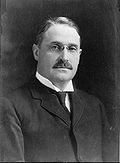 | Frank B. Brandegee | Connecticut | | Republican | March 25–26, 1912 |
 | Augustus O. Bacon | Georgia | | Democratic | April 8, 1912 |
 | Jacob H. Gallinger | New Hampshire | | Republican | April 26–27, 1912;
May 7, 1912 |
 | Augustus O. Bacon | Georgia | | Democratic | May 10, 1912 |
 | Henry Cabot Lodge | Massachusetts | | Republican | May 25, 1912 |
 | Augustus O. Bacon | Georgia | | Democratic | May 30 – June 3, 1912;
June 13 – July 5, 1912 |
 | Jacob H. Gallinger | New Hampshire | | Republican | July 6–31, 1912 |
 | Augustus O. Bacon | Georgia | | Democratic | August 1–10, 1912 |
 | Jacob H. Gallinger | New Hampshire | | Republican | August 12–26, 1912 |
 | Augustus O. Bacon [q] | Georgia | | Democratic | August 27 – December 15, 1912 |
 | Jacob H. Gallinger [q] | New Hampshire | | Republican | December 16, 1912, and
January 4, 1913 |
 | Augustus O. Bacon [q] | Georgia | | Democratic | January 5–18, 1913 |
 | Jacob H. Gallinger [q] | New Hampshire | | Republican | January 19 – February 1, 1913 |
 | Augustus O. Bacon [q] | Georgia | | Democratic | February 2–15, 1913 |
 | Jacob H. Gallinger [q] | New Hampshire | | Republican | February 16 – March 3, 1913 |
 | James Paul Clarke | Arkansas | | Democratic | March 13, 1913 – March 3, 1915 | 63rd Congress |
| December 6, 1915 – October 1, 1916 | 64th Congress |
 | Willard Saulsbury Jr. | Delaware | | Democratic | December 14, 1916 – March 4, 1917 |
| March 5, 1917 – March 3, 1919 | 65th Congress |
 | Albert B. Cummins [r] | Iowa | | Republican | May 19, 1919 – March 3, 1921 | 66th Congress |
| March 7, 1921 – December 2, 1923 | 67th Congress |
| December 3, 1923 – March 3, 1925 | 68th Congress |
| March 4–6, 1925 | 69th Congress |
 | George H. Moses | New Hampshire | | Republican | March 6, 1925 – March 4, 1927 |
| December 15, 1927 – March 3, 1929 | 70th Congress |
| March 4, 1929 – December 6, 1931 | 71st Congress |
| December 7, 1931 – March 3, 1933 | 72nd Congress |
 | Key Pittman | Nevada | | Democratic | March 9, 1933 – January 2, 1935 | 73rd Congress |
| January 7, 1935 – January 4, 1937 | 74th Congress |
| January 5, 1937 – January 2, 1939 | 75th Congress |
| January 3, 1939 – November 10, 1940 | 76th Congress |
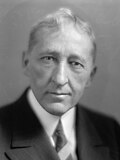 | William H. King | Utah | | Democratic | November 19, 1940 – January 3, 1941 |
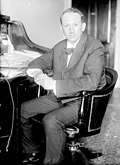 | Pat Harrison | Mississippi | | Democratic | January 6 – June 22, 1941 | 77th Congress |
 | Carter Glass | Virginia | | Democratic | July 10, 1941 – January 5, 1943 |
| January 14, 1943 – January 2, 1945 | 78th Congress |
 | Kenneth McKellar [s] | Tennessee | | Democratic | January 6, 1945 – January 2, 1947 | 79th Congress |
 | Arthur H. Vandenberg [s] | Michigan | | Republican | January 4, 1947 – January 2, 1949 | 80th Congress |
 | Kenneth McKellar [s] | Tennessee | | Democratic | January 3, 1949 – January 2, 1951 | 81st Congress |
| January 3, 1951 – January 2, 1953 | 82nd Congress |
 | Styles Bridges | New Hampshire | | Republican | January 3, 1953 – January 4, 1955 | 83rd Congress |
 | Walter F. George | Georgia | | Democratic | January 5, 1955 – January 2, 1957 | 84th Congress |
 | Carl Hayden [t] | Arizona | | Democratic | January 3, 1957 – January 6, 1959 | 85th Congress |
| January 7, 1959 – January 2, 1961 | 86th Congress |
| January 3, 1961 – January 8, 1963 | 87th Congress |
| January 9, 1963 – January 3, 1965 | 88th Congress |
| January 4, 1965 – January 9, 1967 | 89th Congress |
| January 10, 1967 – January 2, 1969 | 90th Congress |
 | Richard Russell Jr. | Georgia | | Democratic | January 3, 1969 – January 3, 1971 | 91st Congress |
| January 3, 1971 – January 21, 1971 | 92nd Congress |
 | Allen J. Ellender | Louisiana | | Democratic | January 22, 1971 – July 27, 1972 |
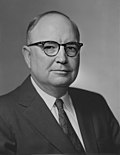 | James Eastland [u] [v] | Mississippi | | Democratic | July 28, 1972 – January 2, 1973 |
| January 3, 1973 – January 13, 1975 | 93rd Congress |
| January 14, 1975 – January 3, 1977 | 94th Congress |
| January 4, 1977 – December 27, 1978 | 95th Congress |
 | Warren Magnuson | Washington | | Democratic | January 15, 1979 – December 4, 1980 | 96th Congress |
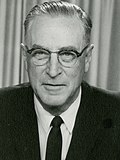 | Milton Young | North Dakota | | Republican | December 5, 1980 |
 | Warren Magnuson | Washington | | Democratic | December 6, 1980 – January 4, 1981 |
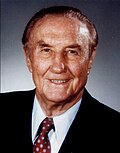 | Strom Thurmond | South Carolina | | Republican | January 5, 1981 – January 2, 1983 | 97th Congress |
| January 3, 1983 – January 2, 1985 | 98th Congress |
| January 3, 1985 – January 5, 1987 | 99th Congress |
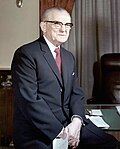 | John C. Stennis | Mississippi | | Democratic | January 6, 1987 – January 3, 1989 | 100th Congress |
 | Robert Byrd | West Virginia | | Democratic | January 3, 1989 – January 2, 1991 | 101st Congress |
| January 3, 1991 – January 4, 1993 | 102nd Congress |
| January 5, 1993 – January 3, 1995 | 103rd Congress |
 | Strom Thurmond | South Carolina | | Republican | January 4, 1995 – January 6, 1997 | 104th Congress |
| January 7, 1997 – January 6, 1999 | 105th Congress |
| January 7, 1999 – January 3, 2001 | 106th Congress |
 | Robert Byrd | West Virginia | | Democratic | January 3–20, 2001 | 107th Congress |
 | Strom Thurmond | South Carolina | | Republican | January 20 – June 6, 2001 |
 | Robert Byrd | West Virginia | | Democratic | June 6, 2001 – January 3, 2003 |
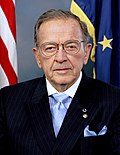 | Ted Stevens | Alaska | | Republican | January 3, 2003 – January 3, 2005 | 108th Congress |
| January 3, 2005 – January 4, 2007 | 109th Congress |
 | Robert Byrd | West Virginia | | Democratic | January 4, 2007 – January 3, 2009 | 110th Congress |
| January 3, 2009 – June 28, 2010 | 111th Congress |
 | Daniel Inouye | Hawaii | | Democratic | June 28, 2010 – January 5, 2011 |
| January 5, 2011 – December 17, 2012 | 112th Congress |
 | Patrick Leahy | Vermont | | Democratic | December 17, 2012 – January 3, 2013 |
| January 3, 2013 – January 3, 2015 | 113th Congress |
 | Orrin Hatch | Utah | | Republican | January 3, 2015 – January 3, 2017 | 114th Congress |
| January 3, 2017 – January 3, 2019 | 115th Congress |
|
 | Chuck Grassley | Iowa | | Republican | January 3, 2019 – January 3, 2021 | 116th Congress |
| January 3, 2021 – January 20, 2021 | 117th Congress |
 | Patrick Leahy | Vermont | | Democratic | January 20, 2021 – January 3, 2023 |
 | Patty Murray | Washington | | Democratic | January 3, 2023 – January 3, 2025 | 118th Congress |
 | Chuck Grassley | Iowa | | Republican | January 3, 2025 – present | 119th Congress |
